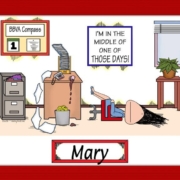Audit issues over Locally Raised Funds

We thought the above topic will be of relevance to your school especially due to external audit sensitivity over this Revenue area.
Your school’s audit service providers may have previously raised their concerns through the Management Report to the Board.
These concerns typically have centred on the lack of internal controls affecting Locally Raised Funds and whether this lack of internal control impact on the accuracy and completeness of revenue as reported in the financial statements.
Some external audit service providers have resorted to qualifying their Audit Report due to this uncertainty especially when certain fund sources have been deemed to be material to audit.
What are Locally Raised Funds?
Locally raised funds are revenue items that are broadly classified as either School Activity or General Fundraising.
School Activity funds for example, are funds raised for School Trips, Kapa Haka, In School Activities, and Production income.
General Fundraising includes Gala Fundraising and funds received by way of Grants from external Foundations like the Lottery Grants Board.
Internal control processes at your school
Well, let’s step back a bit…
What are Internal Controls?
No, it has nothing to do with your physical disposition!
“Internal control is broadly defined as a process, effected by the Board of Trustee’s, management, and other personnel, designed to provide reasonable assurance regarding the achievement of objectives in the following categories:
• Effectiveness and efficiency of operations
• Reliability of financial reporting
• Compliance with applicable laws and regulations
• Safeguarding of assets
Internal control consists of five interrelated components:
• Control environment – The control environment includes the integrity, ethical values, and competence of the Board’s staff and is the foundation for all other components of internal control.
• Risk assessment – Every School faces risks that must be identified, analysed, and managed to achieve its governance objectives.
• Control activities – Control activities are the measures used to help ensure that management directives are carried out and that risks are addressed. They take many forms including policies and procedures, approvals, verifications, reconciliations, performance reviews, security measures, and segregation of duties.
• Information and communication – Information systems must be in place to identify, capture, and communicate relevant information in a form and timeframe that enables people to carry out their responsibilities and maintain accountability for the School’s assets.
• Monitoring – The entire internal control process must be monitored and the quality of its performance assessed as a part of regular management and supervisory activities. Corrective actions must be taken whenever the system does not perform as intended.”
Yes, the definition rather sounds daunting in a school context but let’s have a look at what policy, procedure, processes and controls a school may currently have in place over the collection and recording of Locally Raised Funds together with a cause/effect analysis.
School Activity Funding
Scenario 1
Pupil is given a $50 note by parent/caregiver for a class trip. On the way to school pupil uses funds to buy a Prezzy Card to fund internet gaming costs. Pupil still goes on trip due to Board policy that no pupil should miss out.
Cause/Effect
The Board, unknowingly, has incurred an additional $50 cost. Pupil is naturally ecstatic and absent from school for the next three days.
In this example, would you think that the Board had prepared an appropriate Revenue collection policy?
Are there extenuating demographic factors? Rural, domestic?
Regardless, policies could still be developed to cover for this scenario.
Scenario 2
Exactly the same scenario above but this time, pupil hands over the $50 to his teacher who has been given the responsibility for collecting the funds. Teacher dutifully records the relevant details in a paper record and retains the cash and record in teacher’s desk.
At the end of the week, teacher hands over the cash and records to the main office for receipting and banking.
Cause/Effect
Well done! But wait…does this scenario address certain key components of internal control referred to above?
Effectiveness issue. Is there a duplication in the handling of cash and of the recording duties?
Custody Issue. Are Board funds retained in a secure environment (other than a teacher’s desk)?
Timeliness issue. Was the banking recorded and performed daily, intact?
Policy/Procedure issue. Could teacher not instruct pupil to visit the office for direct payment and thereby have more time for teaching? (There is another effectiveness issue raised in this regard.)
Scenario 3
Parent sets up an internet banking arrangement with the school. Monies are transferred and school administration personnel record the transaction using a Student Management System (if applicable) and to update the General Ledger.
Cause/Effect
This process is the most administratively cost effective and efficient due the nature of the transaction.
Liquid cash is more prone to “diversion” than any other form. Internet transactions are immune to diversion barring Internet piracy…and rejection by the Banks due to “insufficient funds”.
There is an absence of cash handling fees.
Your accounting software (such as Xero) creates the bank transaction which can then be analysed and recorded into the General Ledger within minutes.
This transaction process of course is extremely subject to geographic and domestic demography and we would all love to live in a perfect world.
THE BIGGIE
Next we will examine the biggie that gives the auditors the “twitches” …yep…Gala and other significant Fundraising!
There is a huge amount of fun and camaraderie whenever we ever attend a school gala.
Coconut shies, Books and White Elephants, BBQ snags with bread and onion and mild American, meat raffles and oh! Children having fun without being scolded by teachers and what? Fine weather too!
Then the auditors arrive later (not to the gala of course) and say, well, it’s all good having money recorded in your financial system for the Gala but…
• Are we satisfied that the internal controls (policy and procedure) the Board had in place are sufficient to ensure the Gala funds recorded in your General Ledger is accurate and complete?
• If we are not satisfied (and a true auditor has no sense of humour…unless sarcasm is an acceptable form of humour), Does the lack of internal control provide a material audit risk to the financial disclosures made in the Annual Report?
We offer some scenarios below regarding this form of General Fundraising but we stress that this only applies to Gala and other financially material fundraising activity that is conducted directly by the Board of Trustees on behalf of the School and its beneficiaries, namely the pupils.
Generally there is little audit risk when, Parent Teacher Associations, Friends of the School and such associations operate independently of the School Board with such major fundraising activity.
These Associations/entities usually remit the proceeds to the Board in the capacity as an independent institution.
Is your PTA or similar association an independent entity from the Board?? If so, the scope of the audit only includes Board activities and does not concern itself with “interested parties” that are under independent control.
The concept of Board independence is critical in this regard and we would be only too pleased to assist the Board in developing appropriate structures to address this particular area of Governance.
There are key audit control/financial risk elements when a Gala (or similar, significant fundraiser) is convened by the Board;
• Even if non-cash transaction facilities (such as EFTPOS) were made available by the Board, there will still remain a substantial amount of liquid cash involved.
Liquid/Cash funds derived from Gala fundraisers and similar are able be “diverted” no matter how benevolent the purpose and the consequence will have cause/effect on the Board financial reports.
• Cash collection/custody and recording can be susceptible to distortion of the financial result
• Cash donations at Gala events may be offered without requirement for receipt
Typical Gala Fundraising Scenarios
Scenario 1
Successful Gala!
Out of the Gala cash proceeds, cash is utilised to negotiate a transaction for a “high value” item such as an Electronic Learning Board for $7,000. Funds raised from Gala = $25,000 less the $7,000 = $18,000.
The Bouncy Castle and other Amusement theme providers are paid directly from cash funds derived from Gala activity upon conclusion of the fundraising event.
Residual cash proceeds are deposited into a “common fund” container and taken away by a volunteer for safe keeping during the weekend period.
These funds were banked by the volunteer on the next banking day.
Question: Have Gala funds been collected, banked intact and completely recorded in the Board financial General Ledger?
Answer:Funds have been banked net of disbursements from the Gala funds. Income and expenses recorded in the General Ledger and Financial Reports are not complete and accurate.
Scenario 2
Same gala event but this time, the School has arranged and has prepaid the Amusement Theme providers via the school bank account and has posted these to the General Ledger as Gala Expenses.
Also, the school has designated Board staff volunteers to be at the various points of sale, including the Amusement theme sites. Bouncy Castle Operators have been advised that they will not be involved in collecting cash.
These volunteers text the Office staff when cash levels become high and two Office staff collect the funds and return the same to the office.
If the office staff have time, the cash can be counted with both staff present and a banking lodgement can be completed, bagged and secured ready for banking the following business day.
This process is carried out throughout the Gala day until the end of the fundraiser.
Residual cash is collected by the two office staff and returned in the same way to the office and retained in the safe and is counted and banked on the following Monday.
Question: Will the process outlined above provide more assurance to audit that there was sufficient separation of duties in the cash collection process and that Gala funds have been collected, counted and banked intact?
Answer: The above process provides for a better separation of duties between the parties receiving the cash and those in charge of the recording, banking and custody of the same. No disbursements have been directly made out of the Gala proceeds. Because banking’s were made regularly on Gala day, there will also be less time spent by Office staff in counting and banking the residual funds so that they can focus on their normal roles without the additional stress.
This second scenario is simply an example where cash losses can be minimised to a great extent. Cash being cash is highly liquid and would still be exposed to loss with the above example however, we believe that external audit would gain more confidence over the material completeness and accuracy of gala funds.
What ideas and thoughts do you have? The mind boggles with cunning plans!
Have fun on Gala day too! It’s possibly the only time of the year where the pupils can “dunk” their teacher and/or Principal…














